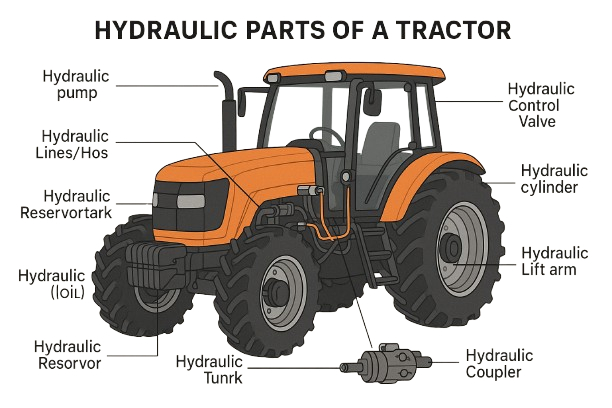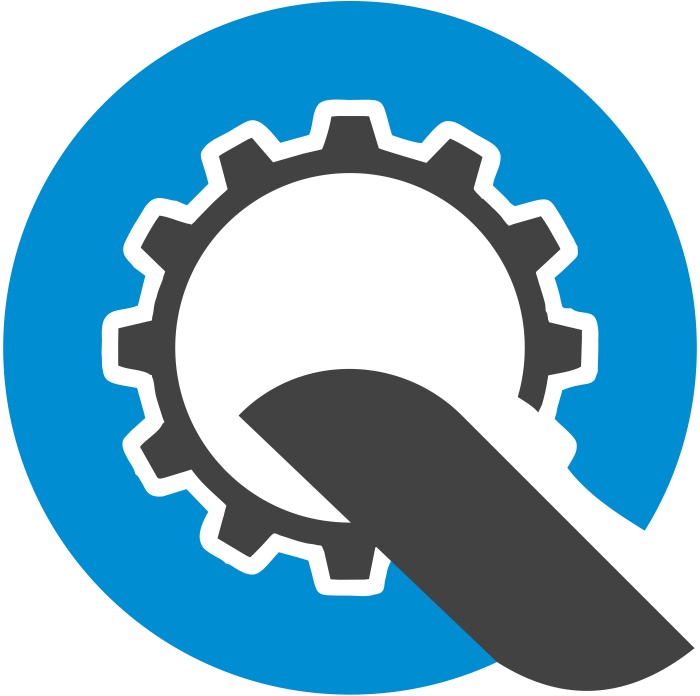Tractors play a crucial role in modern agriculture and construction, serving as the backbone of many farming and building operations. Their versatility and efficiency have transformed how work is accomplished in these fields. One of the most essential systems in a tractor is the hydraulic system, which powers everything from lifting heavy implements to steering and braking.
This system is not only vital for the tractor’s performance but also enhances the operator’s ability to control and maneuver the machine effectively. In this blog, we’ll break down the hydraulic parts of a tractor and explain their individual functions to help you understand how this powerful system works. By gaining insight into each component, you’ll appreciate the complexity and efficiency that hydraulic systems bring to tractors, ultimately leading to better maintenance and operation practices. Let’s dive into the intricate world of tractor hydraulics and discover the key parts that contribute to their remarkable functionality.
What Is a Tractor Hydraulic System?
A tractor hydraulic system is a pressurized fluid system that transmits power through the use of incompressible hydraulic fluid. This innovative technology plays a vital role in modern farming and heavy machinery, enabling operators to perform a wide range of tasks efficiently. By harnessing hydraulic power, farmers and operators can control implements and attachments with precision and ease. This capability not only enhances productivity but also improves the overall effectiveness of agricultural operations.
Hydraulics in tractors are used for lifting, steering, braking, tilting, and operating auxiliary equipment. Each of these functions contributes to the versatility of tractors, making them indispensable tools on farms and construction sites alike. As a result, understanding the components and operation of hydraulic systems is essential for anyone looking to maximize the potential of their tractor.
1. Hydraulic Pump
Function:
The hydraulic pump is the heart of the hydraulic system. It converts mechanical energy from the tractor’s engine into hydraulic energy by moving the hydraulic fluid under pressure. This high-pressure fluid is then used to operate various hydraulic components.
Types of Hydraulic Pumps:
-
Gear pumps
-
Piston pumps
-
Vane pumps
2. Hydraulic Fluid (Oil)
Function:
Hydraulic fluid transmits power within the system. It also acts as a lubricant and coolant for the components. Using high-quality hydraulic oil is essential for the longevity and efficiency of the system.
3. Hydraulic Cylinder
Function:
Also known as a linear actuator, the hydraulic cylinder converts the fluid pressure into mechanical force to create linear motion. This is what physically moves the loader arms, plows, or backhoes.
4. Hydraulic Control Valve
Function:
The control valve directs the flow of hydraulic fluid to different parts of the system. It determines which function (like lifting, lowering, or tilting) is performed at any given time. Some advanced tractors use joystick-controlled valves for ease of operation.
5. Hydraulic Reservoir (Tank)
Function:
The reservoir stores the hydraulic fluid when not in use and also allows heat dissipation. It’s designed to hold extra fluid that is displaced during system operation.
6. Filters
Function:
Filters remove contaminants from the hydraulic fluid, which could otherwise cause wear or damage to the internal components. Clean oil means a more efficient and longer-lasting system.
7. Hydraulic Lines and Hoses
Function:
These carry hydraulic fluid between the pump, valves, cylinders, and tank. They must be strong and leak-proof to handle high pressure and fluid movement.
8. Hydraulic Couplers
Function:
Couplers are connectors that allow attachments (like loaders or harvesters) to be quickly and easily connected or disconnected from the tractor’s hydraulic system.
9. Pressure Relief Valve
Function:
This valve protects the hydraulic system from damage due to excess pressure by diverting excess fluid back to the reservoir when the pressure gets too high.
Conclusion
Understanding the hydraulic parts of a tractor is essential for anyone involved in farming, construction, or machinery maintenance. A well-maintained tractor hydraulic system ensures high performance, safety, and longevity of both the tractor and its attachments.
Whether you’re upgrading your system or troubleshooting an issue, knowing how each hydraulic part functions helps you make smarter decisions.



